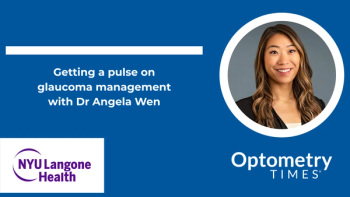
Raising awareness: Dissemination of information to help patients get ahead of glaucoma
Websites about glaucoma abound, and their main goal is to raise awareness to prevent visual loss. Many websites are specific to glaucoma, but a few also provide information about other eye diseases as well and how to maintain overall eye health. This article describes these resources and some of the practical information that can be found within the websites.
Websites about glaucoma abound, and their main goal is to raise awareness to prevent visual loss. Many websites are specific to glaucoma, but a few also provide information about other eye diseases as well and how to maintain overall eye health.
This article touches on some of the myriad resources and practical information that can be found within the respective websites.
The society emphasizes resources, research, and support, and instructs patients in finding an American Glaucoma Society doctor in their locality as well as providing links to other organizations such as the American Academy of Ophthalmology’s
The American Glaucoma Society also provides educational handouts on angle-closure glaucoma that explain the disease and its mechanism of action, risk factors, a technique for possible prevention, signs and symptoms, diagnosis, and treatment as well as numerous other ocular diseases.
Another component of the patient portal is
The website also offers a
With January,
The next steps are educational in nature and include referring a friend to www.glaucoma.org, requesting that a free educational booklet, “
This organization provides patients with a great deal of information about living with glaucoma as well as many sobering facts about the increasing prevalence of the disease.
For example, the organization’s report, “
," states that glaucoma already affects nearly 3 million people aged 40 years and older, and that that number will increase alarmingly by nearly 50% to 4.3 million by 2032 and by more than 90% to 5.5 million by 2050.
Living with the disease can be a daunting prospect, and Prevent Blindness recommends some steps that patient can take to help in their daily activities such as remembering to take notes and write down questions before the doctor visit, explaining to ophthalmologists how the medicines they take affect them and conveying the information about prescribed drugs and their effects and all other drugs to other medical specialists, reading about glaucoma, and measures to take to live with it.
The Prevent Blindness program, “
The website,
The Academy’s page,
Governmental agencies
The
In addition, information is provided about eye health in general and for glaucoma in particular, the importance of annual dilated eye examinations to detect glaucoma and treatments if the disease is diagnosed.
For more glaucoma information and resources from the NEI,
The CDC website offers numerous facts about glaucoma as well as the risk factors and the populations that are at elevated risk.
It also provides a list of “healthy habits” to help avoid vision loss. These include undergoing a comprehensive dilated eye examination for all, but especially for those in a high-risk group; talking to family members about vision health because of glaucoma’s hereditary component; and practical common-sense guidelines that include maintaining a healthy weight, controlling blood pressure, being physically active, and avoiding smoking that will not only help prevent glaucoma but other chronic diseases.
Other website topics include managing and treating glaucoma and learning about low vision.
Reaching people at risk is of special interest to the CDC. The organization funds programs to detect glaucoma and other eye diseases among high-risk communities and provide successful follow-up care. The glaucoma initiatives can be accessed on the website,
Other initiatives listed are CDC’s Vision Health Initiative, CDC’s glaucoma projects, Low vision resources for glaucomaexternal icon, and Glaucoma Research Foundationexternal icon.
Newsletter
Want more insights like this? Subscribe to Optometry Times and get clinical pearls and practice tips delivered straight to your inbox.



















































.png)


